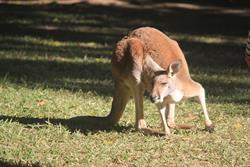
Study Wildlife Conservation
This terrific course in Wildlife Conservation provides you with a solid understanding of the principles of conservation biology and how to apply these in practical situations.
- Learn the skills to start on the path to working in Wildlife Conservation
- Learn about ecosystem management, habitat fragmentation and restoration, surveying wildlife and plants and creating recovery plans for threatened species.
This course is unique because you can practically apply your knowledge whilst studying from home.